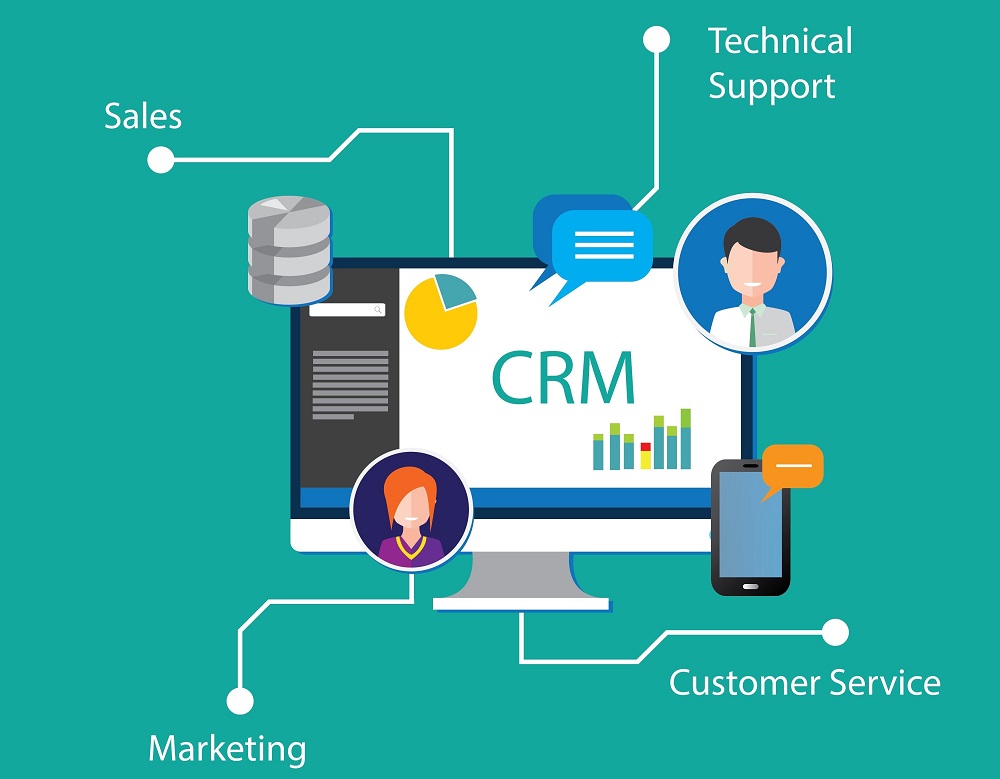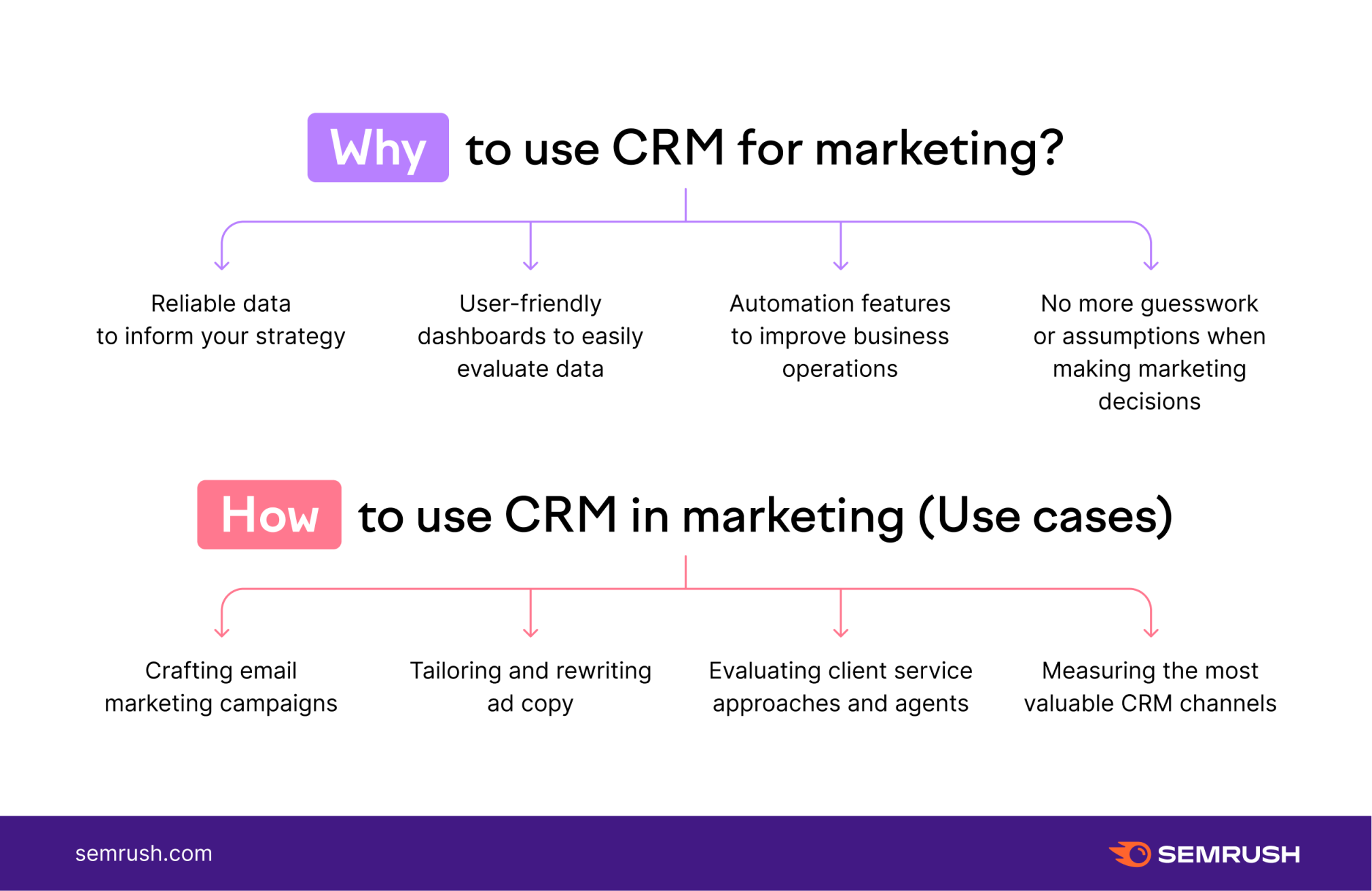In the realm of customer engagement, marketing and CRM (Customer Relationship Management) intertwine seamlessly to create a powerful synergy. This integrated approach empowers businesses to nurture relationships, drive growth, and elevate customer experiences to new heights.
By harnessing the combined capabilities of marketing and CRM, organizations can gain a comprehensive understanding of their customers, automate marketing processes, and deliver personalized experiences that foster loyalty and drive conversions.
Marketing and CRM Integration
Integrating marketing and CRM systems offers numerous benefits for businesses. It enables a seamless flow of customer data between these systems, providing a comprehensive view of customer interactions and preferences. This integration allows for more targeted and personalized marketing campaigns, improved customer service, and enhanced sales opportunities.
Successful Marketing and CRM Integrations
Several notable companies have successfully integrated marketing and CRM systems. For instance, Starbucks implemented a loyalty program that integrated with its CRM, enabling personalized marketing campaigns based on customer purchase history and preferences. Another example is Amazon, which integrated its CRM with its e-commerce platform, providing personalized product recommendations and tailored marketing messages to customers.
Challenges of Integrating Marketing and CRM Systems
While integrating marketing and CRM systems offers significant benefits, it also presents certain challenges. Data compatibility issues can arise, as marketing and CRM systems often use different data formats and structures. Additionally, ensuring data security and privacy compliance can be complex, requiring careful planning and implementation.
CRM for Marketing Automation

CRM (Customer Relationship Management) software can be a powerful tool for marketing automation, enabling businesses to streamline and optimize their marketing campaigns. By integrating CRM with marketing automation tools, businesses can automate various tasks, such as lead generation, lead nurturing, and customer segmentation.
Examples of Marketing Automation Workflows Using CRM
- Lead Generation:CRM can be used to capture leads from various sources, such as websites, forms, and social media. The CRM system can then automatically qualify these leads and assign them to the appropriate sales team.
- Lead Nurturing:CRM can be used to create automated email campaigns that nurture leads over time. These campaigns can provide valuable content, such as blog posts, whitepapers, and webinars, to help leads learn more about the business and its products or services.
- Customer Segmentation:CRM can be used to segment customers based on their demographics, behavior, and preferences. This information can then be used to create targeted marketing campaigns that are more likely to resonate with each segment.
Advantages of Using CRM for Marketing Automation
- Improved efficiency:CRM can automate many marketing tasks, freeing up marketing teams to focus on more strategic initiatives.
- Increased lead generation:CRM can help businesses generate more leads by providing a central repository for all lead data and automating lead generation processes.
- Improved lead nurturing:CRM can help businesses nurture leads more effectively by providing automated email campaigns and other marketing materials.
- Better customer segmentation:CRM can help businesses segment their customers more effectively, allowing them to create more targeted marketing campaigns.
- Increased sales:CRM can help businesses increase sales by providing sales teams with better leads and more information about their customers.
Data Management for Marketing and CRM
Data management is crucial for effective marketing and customer relationship management (CRM) as it provides valuable insights into customer behavior, preferences, and interactions. By collecting, managing, and analyzing customer data, businesses can gain a comprehensive understanding of their target audience, personalize marketing campaigns, and enhance customer experiences.
Strategies for collecting customer data include surveys, website analytics, social media monitoring, and loyalty programs. Once collected, this data can be stored in a centralized customer relationship management (CRM) system, which provides a single, integrated view of all customer interactions across different channels.
Data Management and Marketing Effectiveness
Effective data management enables marketers to segment their audience based on specific criteria, such as demographics, purchase history, and engagement levels. This allows for targeted marketing campaigns that resonate with each segment’s unique needs and interests. Additionally, data analysis can identify trends, patterns, and areas for improvement, enabling marketers to optimize their strategies and maximize campaign performance.
Data Management and CRM Effectiveness, Marketing and crm
In CRM, data management plays a pivotal role in building strong and lasting customer relationships. By tracking customer interactions, preferences, and feedback, businesses can provide personalized experiences that meet individual needs. Data analysis can also identify potential churn risks, allowing for proactive interventions to retain valuable customers.
Customer Segmentation and Targeting

Customer segmentation and targeting are crucial aspects of marketing, and CRM plays a vital role in enhancing these processes. CRM systems enable businesses to collect, store, and analyze customer data, providing valuable insights for effective segmentation and targeting strategies.
CRM systems allow businesses to segment customers based on various criteria such as demographics, behavior, preferences, and purchase history. This segmentation helps businesses identify distinct customer groups with unique needs and characteristics. By understanding these segments, businesses can tailor their marketing campaigns and offerings to resonate with each segment’s specific requirements.
Examples of Customer Segmentation and Targeting Strategies Using CRM
- Demographic Segmentation:Divide customers into groups based on age, gender, income, location, and other demographic factors. This helps businesses target campaigns to specific age groups or income levels.
- Behavioral Segmentation:Segment customers based on their past purchase behavior, website interactions, and communication preferences. This allows businesses to identify loyal customers, high-value customers, and customers at risk of churn.
- Psychographic Segmentation:Segment customers based on their values, beliefs, attitudes, and lifestyle. This helps businesses target campaigns that align with the customers’ interests and aspirations.
Benefits of Using CRM for Customer Segmentation and Targeting
- Improved Customer Understanding:CRM provides a comprehensive view of customer data, enabling businesses to gain a deeper understanding of their customers’ needs, preferences, and behavior.
- Enhanced Marketing Campaigns:CRM allows businesses to create targeted marketing campaigns that resonate with each customer segment. This improves campaign effectiveness and ROI.
- Personalized Customer Experiences:CRM enables businesses to deliver personalized customer experiences across all touchpoints. This strengthens customer relationships and increases customer satisfaction.
- Increased Sales:Effective customer segmentation and targeting lead to increased sales by identifying and targeting high-value customers and customers with specific needs.
Personalization and Customer Engagement

Personalization has become a critical aspect of marketing and CRM in today’s digital age. By leveraging customer data, businesses can tailor their marketing campaigns and CRM strategies to create highly personalized experiences that resonate with individual customers.
Personalized marketing campaigns involve creating targeted messages and content that are tailored to the specific interests, preferences, and behaviors of each customer. This can be achieved through various channels, such as email, social media, and website personalization. For instance, a clothing retailer can send personalized emails to customers showcasing products that align with their previous purchases or browsing history.
Benefits of Personalization for Customer Engagement
- Increased customer satisfaction and loyalty
- Improved customer engagement and response rates
- Enhanced brand reputation and customer trust
- Higher conversion rates and sales
- Reduced churn rate
Measuring Marketing and CRM ROI
Measuring the return on investment (ROI) of marketing and CRM initiatives is crucial for businesses to justify their expenses and demonstrate the effectiveness of their efforts. By tracking key metrics, organizations can evaluate the impact of their campaigns and make informed decisions about future investments.
Metrics for Measuring Marketing and CRM ROI
Some common metrics used to measure marketing and CRM ROI include:
- Sales revenue generated
- Lead generation and conversion rates
- Customer lifetime value (CLTV)
- Return on ad spend (ROAS)
- Customer satisfaction and retention rates
Challenges of Measuring Marketing and CRM ROI
Measuring marketing and CRM ROI can be challenging due to several factors, including:
- Long sales cycles, making it difficult to attribute revenue directly to specific campaigns
- Multi-channel marketing, which involves tracking results across multiple platforms
- Data accuracy and consistency issues, which can lead to unreliable metrics
- The subjective nature of customer satisfaction and retention, which can make it difficult to quantify
Best Practices for Marketing and CRM
Integrating marketing and CRM systems can help businesses streamline their marketing efforts and improve customer relationships. Here are some best practices for integrating marketing and CRM systems:
- Use a single platform for marketing and CRM. This will help ensure that all customer data is in one place and that marketing and sales teams are working from the same set of information.
- Integrate marketing and CRM data. This will allow you to track the impact of marketing campaigns on sales and customer behavior.
- Use marketing automation to streamline marketing tasks. This can free up marketing teams to focus on more strategic initiatives.
- Personalize marketing messages. This can help improve customer engagement and conversion rates.
- Measure the ROI of marketing campaigns. This will help you justify the investment in marketing and CRM.
Tips for Using CRM for Marketing Automation
CRM systems can be used to automate a variety of marketing tasks, such as:
- Email marketing
- Social media marketing
- Lead generation
- Customer segmentation
- Marketing analytics
By using CRM for marketing automation, businesses can save time and money, and improve the efficiency of their marketing efforts.
Best Practices for Data Management in Marketing and CRM
Data management is essential for successful marketing and CRM. Here are some best practices for data management in marketing and CRM:
- Collect accurate and complete data.
- Clean and de-duplicate data.
- Store data securely.
- Use data to segment customers.
- Use data to personalize marketing messages.
- Use data to measure the ROI of marketing campaigns.
By following these best practices, businesses can improve the quality of their data and use it to improve their marketing and CRM efforts.
Last Word
In conclusion, the integration of marketing and CRM empowers businesses with a holistic view of their customers, enabling them to tailor marketing campaigns, nurture relationships, and create exceptional customer experiences. By embracing this integrated approach, organizations can unlock the full potential of customer engagement, drive growth, and establish a competitive advantage in today’s dynamic market landscape.